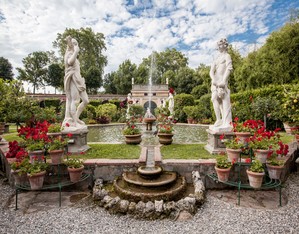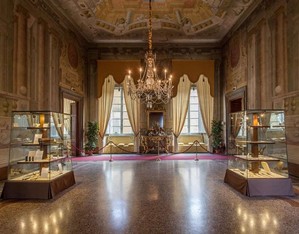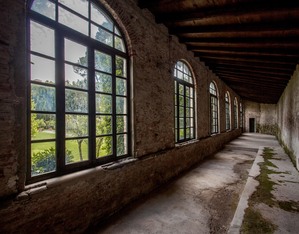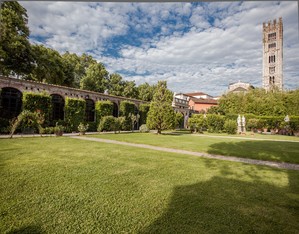Take a walk down the avenue of plane trees that runs along Lucca’s 16th-century walls, near the church of San Frediano, and discover the beauty of a garden set like a gem into the fabric of the city.
At first glance, this garden appears to be a hortus conclusus, albeit one that maintains a constant relationship with both the city walls/the tree-lined promenade, and the urban backdrop. In the second half of the 17th century, the Moriconi family began work on the palazzo and garden. By the end of the century, a family of silk merchants, the Contronis, had taken over the property and enriched the complex with a splendid external staircase (there is some debate whether it was designed by Filippo Juvarra or Domenico Martinelli) as a scenic filter between the palazzo and the garden. The early 18th-century, theatrical garden is attributed to Juvarra. The central sector is arranged along a perspective centreline marked out by statues of gods and mythological heroes. At the sides of the entrance, in two niches, are statues of “Magna Mater” Cybeleand Hercules, guardian of the garden of the Hesperides. The large central octagonal basin features the Four Elements (Vulcan as the symbol of Fire, Mercury of Air, Dionysus of Earth, and Ocean of Water). A large lemon house in the background, along the walls, sports an elegant brick facade dotted with large windows that alternate with laurel hedges. Two lions (attributes of Cybele) flank the basilisk, the Controni family emblem, on the topmost balustrade. The other sector of the garden consists of large lawn areas with numerous earthenware tubs of lemon trees, some of which bear the date 1843. Tall topiary hedges of laurel and box run along the sides of the formal garden, along with two bamboo groves of 19th-century origin, added when the property was purchased by Felice Pfanner, an industrialist of German origin who in 1856 set up a brewery that produced beer here until 1929.





